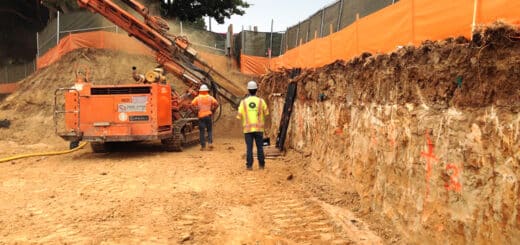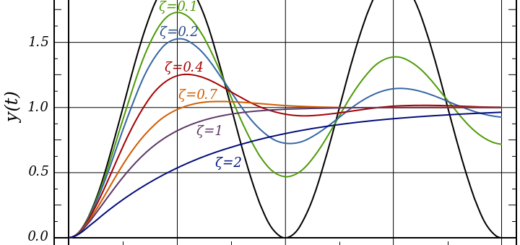Rock Strength Testing in Construction
Rock strength testing plays a crucial role in construction projects, providing valuable insights into the mechanical properties of rocks. By determining the strength characteristics, engineers and geologists can assess the stability of rock formations, design appropriate foundations, analyze slope stability, and optimize excavation and tunneling processes. In this article, we will explore the various methods of rock strength testing, their applications, challenges, and advancements in the field.
Rock strength testing involves the evaluation of a rock’s ability to withstand mechanical stress and deformation. It is an essential part of construction projects as it helps engineers understand the behavior of rocks under different loading conditions. By testing the strength of rocks, professionals can make informed decisions regarding design, construction, and safety considerations.
Types of Rock Strength Tests
- Uniaxial Compressive Strength Test
The uniaxial compressive strength (UCS) test is one of the most common methods for assessing rock strength. It involves applying a uniaxial load to a cylindrical rock sample until failure occurs. The UCS test provides a measure of the maximum compressive stress that a rock can withstand without fracturing.
- Point Load Strength Test
The point load strength test evaluates the rock’s strength by applying a concentrated load to a small rock specimen. This test is relatively quick and inexpensive compared to other methods. It provides an estimate of rock strength based on the point load index.
- Brazilian Tensile Strength Test
The Brazilian tensile strength test measures the tensile strength of rocks. It involves applying a diametral load to a cylindrical rock sample until it fractures. This test provides valuable information for applications involving tensile stresses, such as dam foundations and underground excavations.
- Indirect Tensile Strength Test
The indirect tensile strength test evaluates the tensile strength of rocks indirectly. It involves applying a diametral load to a rock disk while restraining the axial movement. This test is particularly useful for assessing the tensile strength of rock cores and determining the mode of failure.
- Shear Strength Test
The shear strength test assesses the rock’s resistance to shear forces. It involves applying a shear load to a rock sample until failure occurs. This test is essential for studying the stability of slopes, tunnel walls, and rock masses subjected to shear stress.
Testing Equipment and Procedures
- Equipment: Rock strength testing requires specialized equipment, including a hydraulic or servo-controlled testing machine capable of applying a uniaxial load, a point load strength tester, a Brazilian tensile strength apparatus, and shear strength testing equipment.
- Sample Preparation: Rock samples for testing are obtained from the project site or a designated rock outcrop. The samples are carefully selected to represent the geological conditions of the project area. They are then prepared by cutting cylindrical or prismatic specimens with precise dimensions and ensuring flat and parallel surfaces.
- Test Procedure and Data Collection: The specific test procedure varies depending on the type of strength test being conducted. In the uniaxial compressive strength test, the cylindrical rock sample is placed in the testing machine, and a gradual load is applied until failure occurs. The maximum load at failure is recorded as the compressive strength. Similarly, for other tests such as the point load strength test, Brazilian tensile strength test, indirect tensile strength test, and shear strength test, specific procedures are followed to apply the appropriate load and measure the corresponding strength parameters.
During the testing process, data such as load, displacement, and deformation are continuously recorded. These data points are crucial for analyzing the rock’s behavior under stress and determining its strength characteristics.
Interpretation of Test Results
Interpreting the results of rock strength tests is essential to understand the significance of the obtained values. The following aspects are considered during the interpretation:
- Determining Rock Strength Parameters: The test results provide information on various rock strength parameters, such as compressive strength, tensile strength, and shear strength. These parameters help engineers assess the stability of rock masses and make informed decisions during the design and construction phases.
- Relationship Between Rock Strength and Construction Applications: The test results allow engineers to evaluate the suitability of rocks for specific construction applications. For example, rocks with high compressive strength are preferred for foundation design, while rocks with adequate shear strength are essential for tunneling and excavation projects.
- Safety Considerations: The test results help identify potential risks associated with rock stability. By understanding the rock’s strength characteristics, engineers can implement appropriate safety measures, such as rock reinforcement or support systems, to ensure the stability of structures and prevent failures.
Factors Affecting Rock Strength
Several factors influence the strength of rocks. Understanding these factors is crucial for accurate rock strength assessment. The following are some of the key factors:
- Geological Factors: The geological characteristics of rocks, including their formation process, mineral composition, and structural features, influence their strength properties. Rocks with different geological origins can exhibit varying degrees of strength.
- Mineral Composition: The type and arrangement of minerals within a rock influence its strength. Some minerals are inherently stronger than others, and their presence in different proportions can affect the overall rock strength.
- Weathering Effects: Weathering processes, such as exposure to moisture, temperature fluctuations, and chemical reactions, can weaken rocks over time. Weathered rocks generally have lower strength compared to fresh, unweathered rocks.
- Stress Conditions: The stress conditions acting on rocks, including confining pressure, pore pressure, and the direction of applied stress, can significantly affect their strength. Rocks exhibit different strength characteristics under various stress regimes.
Applications of Rock Testing in Construction
Rock strength testing has numerous applications in construction projects. The knowledge gained from these tests helps engineers make informed decisions and ensure the safety and stability of structures. The following are some key applications:
- Foundation Design: The compressive strength of rocks is critical for designing foundations of structures such as buildings, bridges, and dams. By understanding the rock strength, engineers can determine the load-bearing capacity of the foundation and ensure its stability.
- Slope Stability Analysis: Rock strength testing is essential in analyzing the stability of slopes and rock masses. By assessing the shear strength and other relevant parameters, engineers can evaluate the potential for slope failures and implement necessary measures to mitigate risks.
- Tunneling and Excavation: Rock strength tests help in tunneling and excavation projects. The data obtained from these tests assist engineers in selecting appropriate excavation methods, determining support systems, and ensuring the stability of underground structures.
- Rock Blasting: Understanding the strength of rocks is crucial in rock blasting operations. By knowing the rock’s resistance to explosive forces, engineers can design effective blasting techniques while minimizing potential damage to the surrounding environment and structures.
Challenges and Limitations in Rock Testing
While rock strength testing is valuable, it also presents some challenges and limitations that need to be considered:
- Variability of Rock Strength: Rock strength can vary significantly within a given rock formation. It depends on factors such as rock composition, structure, and geological history. This variability poses challenges in accurately assessing the overall strength of a rock mass.
- Sample Size Limitations: Obtaining representative rock samples for testing can be challenging, especially when dealing with large-scale projects or complex geological formations. The size and quality of the samples can affect the accuracy of the test results.
- Cost and Time Constraints: Conducting comprehensive rock strength testing can be expensive and time-consuming. Testing a large number of samples or using advanced testing methods may not always be feasible within project constraints.
Advances in Rock Strength Testing
The field of rock strength testing has seen several advancements aimed at improving accuracy and efficiency. Some notable advances include:
- Non-destructive Testing Methods: Non-destructive testing techniques, such as ultrasonic testing and sonic logging, allow engineers to assess rock strength without damaging the samples. These methods provide valuable information for evaluating the integrity of rocks and detecting hidden defects.
- Digital Image Analysis: Digital image analysis techniques enable engineers to analyze rock samples at a microscopic level. High-resolution imaging and advanced algorithms help in quantifying rock texture, mineralogy, and fabric, which are directly related to rock strength.
- Remote Sensing Techniques: Remote sensing technologies, such as LiDAR (Light Detection and Ranging) and ground-penetrating radar, provide valuable data on rock mass characteristics and discontinuities. These techniques assist in understanding the structural properties and potential weaknesses within rock formations.
In conclusion, rock strength testing plays a vital role in the field of construction. It provides valuable information about the mechanical properties of rocks, enabling engineers and geologists to make informed decisions during the design, construction, and maintenance phases of projects. By understanding the rock’s strength characteristics, professionals can assess the stability of rock formations, design safe and efficient foundations, analyze slope stability, optimize excavation and tunneling processes, and ensure the success of rock blasting operations.
The various types of rock strength tests, such as the uniaxial compressive strength test, point load strength test, Brazilian tensile strength test, indirect tensile strength test, and shear strength test, offer valuable insights into different aspects of rock behavior. Interpreting the test results helps determine rock strength parameters, establish relationships between rock strength and construction applications, and consider safety considerations.
Factors affecting rock strength, including geological factors, mineral composition, weathering effects, and stress conditions, must be taken into account during rock strength testing and analysis. Understanding these factors enhances the accuracy and reliability of the results.
FAQs
- Why is rock strength testing important in construction? Rock strength testing is crucial in construction as it helps engineers assess the stability of rock formations, design foundations, analyze slope stability, optimize excavation and tunneling, and ensure safe rock blasting operations.
- What are the common methods of rock strength testing? Common methods of rock strength testing include the uniaxial compressive strength test, point load strength test, Brazilian tensile strength test, indirect tensile strength test, and shear strength test.
- How do geological factors influence rock strength? Geological factors such as formation process, mineral composition, and structural features can significantly affect rock strength. Different rock origins and compositions can result in varying degrees of strength.
- What are the advancements in rock strength testing? Advancements in rock strength testing include non-destructive testing methods, digital image analysis, and remote sensing techniques, which improve accuracy and efficiency in assessing rock strength.
- What are the best practices for rock strength testing? Best practices for rock strength testing include following standardized testing procedures, implementing quality control measures, and documenting and reporting test procedures, sample information, and results.




